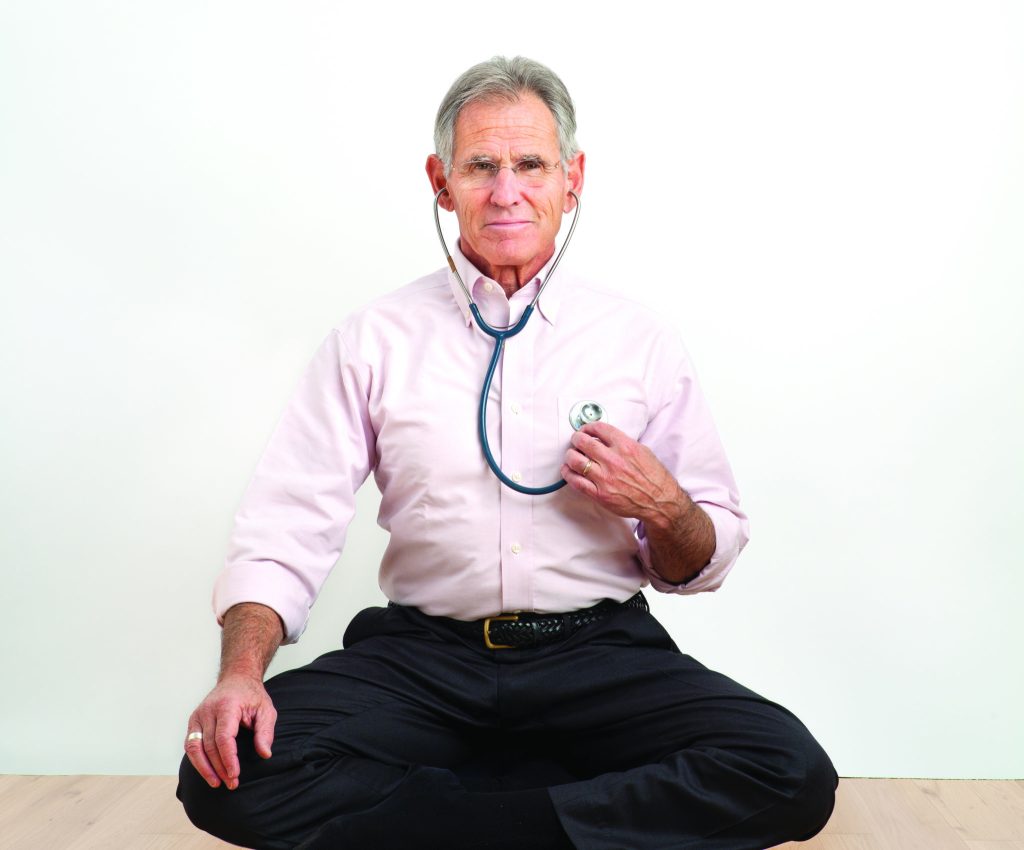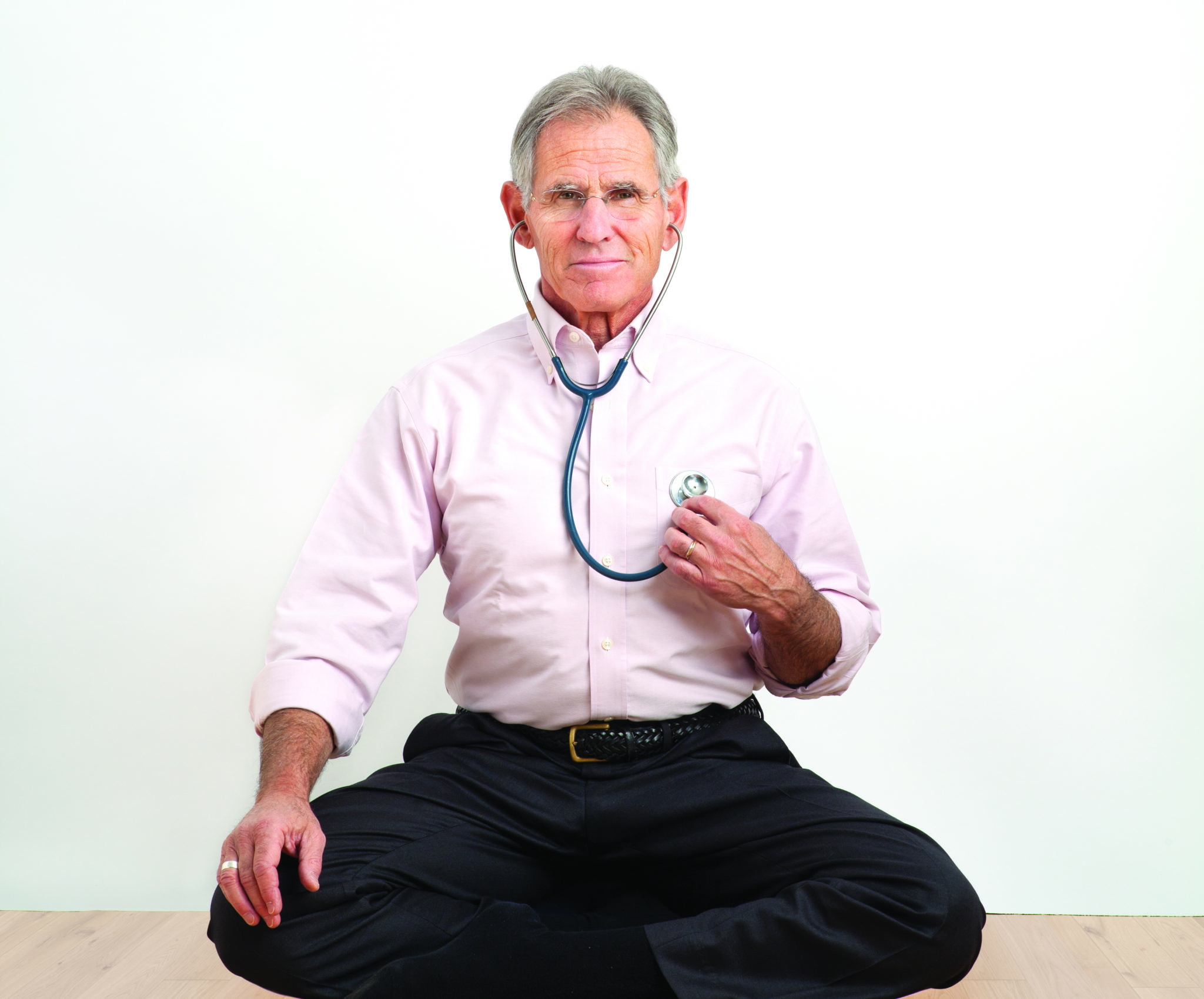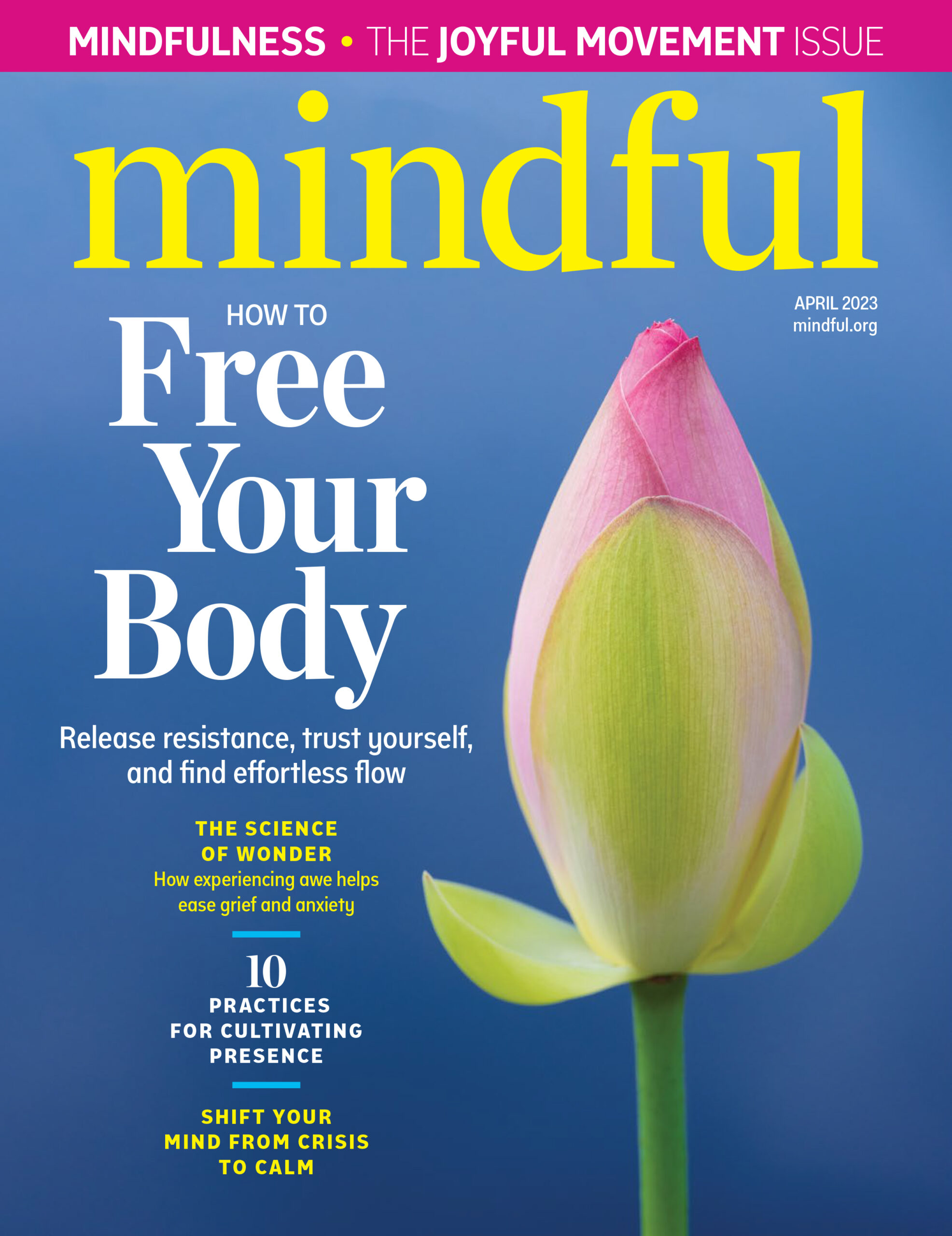Who is Jon Kabat-Zinn?
In 1979, Dr. Jon Kabat-Zinn, a microbiologist working at the University of Massachusetts Medical School in Worcester (UMass Medical School), MA, started a modest eight-week program called Mindfulness-Based Stress Reduction—inviting patients to take some time for self-care down in the hospital’s basement. More than forty years later, MBSR is taught the world over and has become the gold standard for applying mindfulness to the stresses of everyday life and for researching whether mindfulness practice can improve mental and physical health.
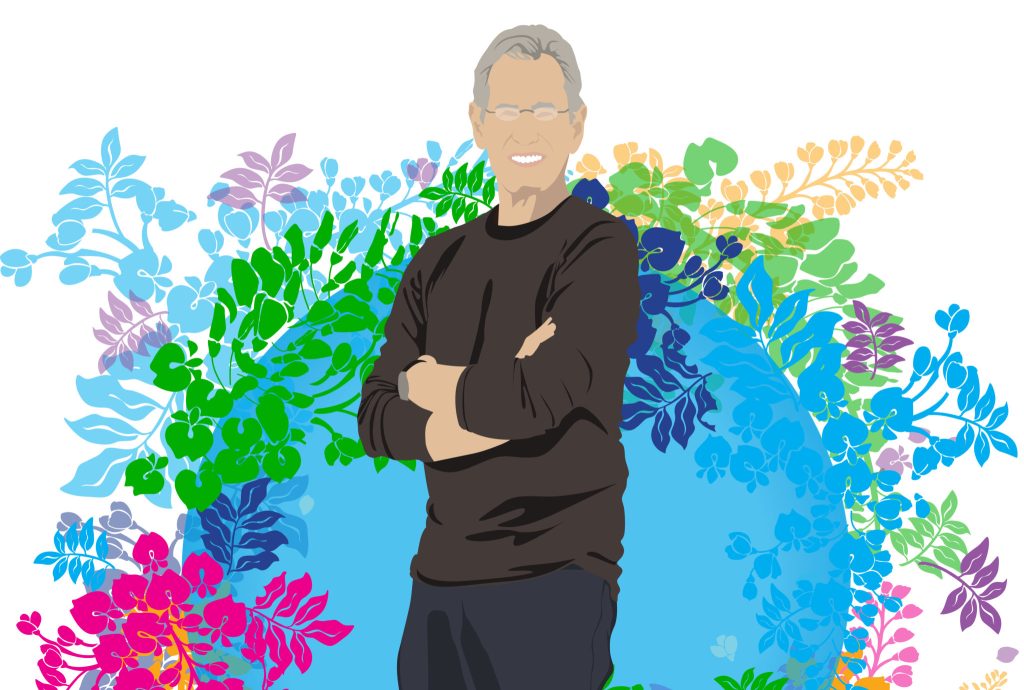
Kabat-Zinn is also the founder of the Center for Mindfulness in Medicine, Health Care, and Society at UMass Medical School. He is author of Full Catastrophe Living: Using the Wisdom of Your Body and Mind to Face Stress, Pain, and Illness; Wherever You Go, There You Are; Coming to Our Senses; and Mindfulness for Beginners. He trains, teaches, and lectures throughout the world on applications of mindfulness and is Professor of Medicine Emeritus at UMass Medical School.
Kabat-Zinn has emphasized that mindfulness is not a mental trick. Rather it is a basic human inheritance that is essential to life. We need to be optimally aware of who we are, where we are, and how we are in order to survive individually and as communities, and even as a species, in Kabat-Zinn’s view.
Jon Kabat-Zinn MasterClass
Jon Kabat-Zinn speaks with Darvish’s founding editor Barry Boyce about his new MasterClass, and how it’s really about non-mastery.
Barry: Let’s start off with a very basic question: is mindfulness a state of mind, a fundamental capability, a practice, et cetera? In a time when the word gets used an awful lot—a lot more than back in 1979. What do you think’s most important to emphasize about mindfulness, what it is and why it’s important?
Jon: Well, it’s both a formal meditative practice that has a lot of different dimensions and aspects to it, it requires some kind of commitment of time and energy to actually stop and drop into the only moment that we ever have to be alive in. We’re usually blasting through to get to some better moment at some future time when we get stuff off our desk or, whatever it is, off our to do list. So one, is that mindfulness is a whole repertoire of formal meditative practices aimed at cultivating moment-to-moment nonjudgmental awareness. And nonjudgmental, by the way, does not mean that you won’t have any likes or dislikes or that you’ll be completely neutral about everything. Nonjudgmental really means that you’ll become aware of how judgmental you are and then not judge that and see if you [can let go], for a few moments at least, the restraining order that filters everything through our likes and dislikes or wants or aversion. So that’s already quite an exercise, quite an undertaking to cultivate that kind of attention and that kind of awareness and learn how to reside inside it.
Then another aspect of mindfulness is pure awareness, is not just formal meditation practice, but in some sense living life in every moment that we have it to live.
So that means bringing one’s formal meditation practice out into the world and letting life become both the meditation teacher and the practice, moment by moment, no matter what arises. Which makes it very challenging because so many things can arise in life that create real hurdles and problems and stress and emotional pain and physical pain and everything else. So, this is a major undertaking.
What it is not is a particular state that, if you were really good at meditating, you’d be there and then you could get back to it whenever you wanted. And that’s your home base that never deviates. If you try to approach it that way, you’ll always be striving to get to some special state that you’re imagining is what mindfulness is all about and actually missing how special the condition of this present moment is, no matter what. One example being—if you’re listening to this with your ears, the miracle of hearing—that’s non-trivial. And how we actually decode vibrations that come into the ears and set that tympanic membrane—the ear drum—going and then ultimately getting resolved in the auditory cortex. What we’re talking about is a miracle here and that’s just hearing. So, then there’s seeing, feeling, tasting, touching and all of the different domains in which human intelligence arises, including thoughts and emotions. And what we’re doing is we’re embracing it all in awareness so that we can actually navigate moments with as much clarity, equanimity and balance as possible, and not merely to be balanced for ourselves, but for the sake of being in deep connection with what’s actually happening. And since we’re social beings, that includes all of the different ways that we’re folded into our families, into our history, into our society, into every aspect, including the planetary aspect of how we are in relationship to nature, Mother Nature and the future that we’re bequeathing to our future generations.
Barry: I want to get to that aspect of things a bit later on in our discussion. Just to go back to some of the things you were saying—you’ve been talking about mindfulness as an undertaking, and not a state but, is there a natural capability there that we’re cultivating, that’s already available to everybody?
Jon: Well, you’re right on target because, of course, you’ve been practicing for decades yourself. And there’s no one right way to practice, by the way. So there are lots of different doors into this room of mindfulness and lots of different traditions that are grounded in mindfulness. The doorways may look different, but the room to a first approximation is the same. So, part of it is that you’re willing to actually drop into the present moment, as I said, and apprehend the actuality of it. To do that requires a certain kind of grounding in being—and we’re so into doing and getting someplace else that we’re not actually that in touch with being in the present moment unless things are exactly the way we want them to be. So, the approach is to really befriend yourself and see if you can actually take up residence in the domain of being, by resting in awareness which you don’t have to acquire, you’re born with the capacity for awareness. What we are acquiring with mindfulness as a formal practice is access into this core aspect of our humanity, which, you know, I sometimes say could be the final common pathway actually of what makes us humans as the species Homo sapiens sapiens. And this awareness doesn’t get that much air time in school, at least until recently. Now it’s changing. But actually recognize that aside from thinking, which is a fantastic form of intelligence, and then there’s emotional intelligence and social intelligence, the core intelligence may be awareness itself, which is very poorly understood scientifically. But the fact is that everybody already has it, so that means there’s nothing you have to acquire.
Befriend yourself and see if you can actually take up residence in the domain of being, by resting in awareness which you don’t have to acquire, you’re born with the capacity for awareness.Jon Kabat-Zinn
What we’re doing in the formal meditation practice is in some sense sweeping things out of the way so that we have access, we’re clearing the brush, so to speak, that’s kind of occluding our capacity to really rest in awareness, to inhabit the field of awareness. And the best place to start is with the body, the body is the first foundation of mindfulness.
So, can we bring awareness to our body with a certain kind of openness and acceptance that doesn’t have us falling into liking and disliking what’s going on with the body, but learning how to in some sense take up residency in awareness of the body? And then that’s kind of like a platform for everything else in human experience, because there’s a lot more going on than merely the body.
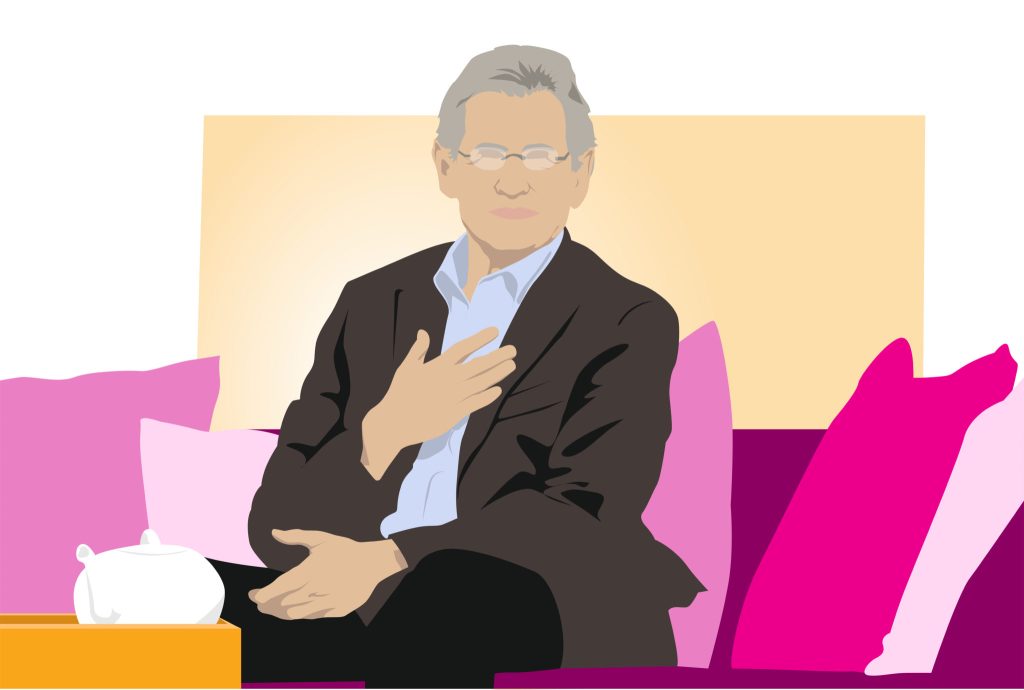
What is Mindfulness-Based Stress Reduction (MSBR)?
MBSR was built on the conviction that the insights, wisdom, and compassion of the meditative traditions were equal in import and magnitude to the great discoveries about human life made in the West. If there’s an instruction manual for being human, then Western science and medicine have supplied one part of it, and the contemplative traditions have supplied another, the part that has to do with discovering and cultivating our deep interior resources.
Kabat-Zinn’s hope was that by starting a stress-reduction clinic based on relatively intensive training in mindfulness meditation and yoga—and their applications in everyday living—we could document how these practices might have a profound effect on the health and well-being of individuals. The larger purpose was to effect a kind of public-health intervention that would ultimately move the bell curve of the entire society.
The 8-Week MBSR Program
The eight weeks of the MBSR curriculum offer a reliable protocol that is used in many studies of the effects of mindfulness meditation practice. People who have taught it a lot have seen that it has an integrity of its own. If they try to switch things around—a little more of this, a little less of that, take this out, put this in—they find it isn’t as effective, Kabat-Zinn says.
Yet it’s only a framework. It’s only as effective as what the teacher brings to it and how they “holds the space,” as we say. It simply will not work if it is scripted or formulaic. If the teacher doesn’t feel competent in one of the elements, say yoga, it doesn’t work if they bring in an outside expert. They have to get the training and embody it themselves.
In an interview with Darvish, Kabat-Zinn said, “As a teacher, you are trying to convey something that can’t be conveyed in words. Mindfulness is also heartfulness—you need poetry as much as prose. What truly makes mindfulness training work is love. If the teacher holding the class is profoundly in love with what they are doing and with the people in the class in a fundamental way, it will work. If they are not, it will peter out.”
The Foundational Science of Mindfulness-Based Interventions
Mindfulness meditation studies were coming out of Kabat-Zinn’s Stress Reduction Clinic as early as 1982. Since that time, more than 25,000 people have completed his groundbreaking multi-week program, which came to be known as MBSR, learning to build their capacity to respond to stress, pain, and even chronic illness.
Kabat-Zinn applied the basic principles of mindfulness meditation to patients in a medical setting and his work developing the MBSR program proved effective in helping alleviate the suffering of previously debilitating medical conditions such as chronic pain. It also served as fertile ground for a systematic set of research investigations in collaboration with one of the founders of the field of affective neuroscience, Richard Davidson of the University of Wisconsin at Madison.

